Space Perspective completes capsule for balloon-powered "journey to the edge of space"
Space tourism company Space Perspective has unveiled a test capsule for its Neptune spacecraft that, buoyed by a giant balloon, could carry tourists into the stratosphere next year.
The pressurised capsule will embark on its first unmanned test flight over the coming weeks, with the aim to have a human-rated version of the spaceship ready for commercial flights by 2025.
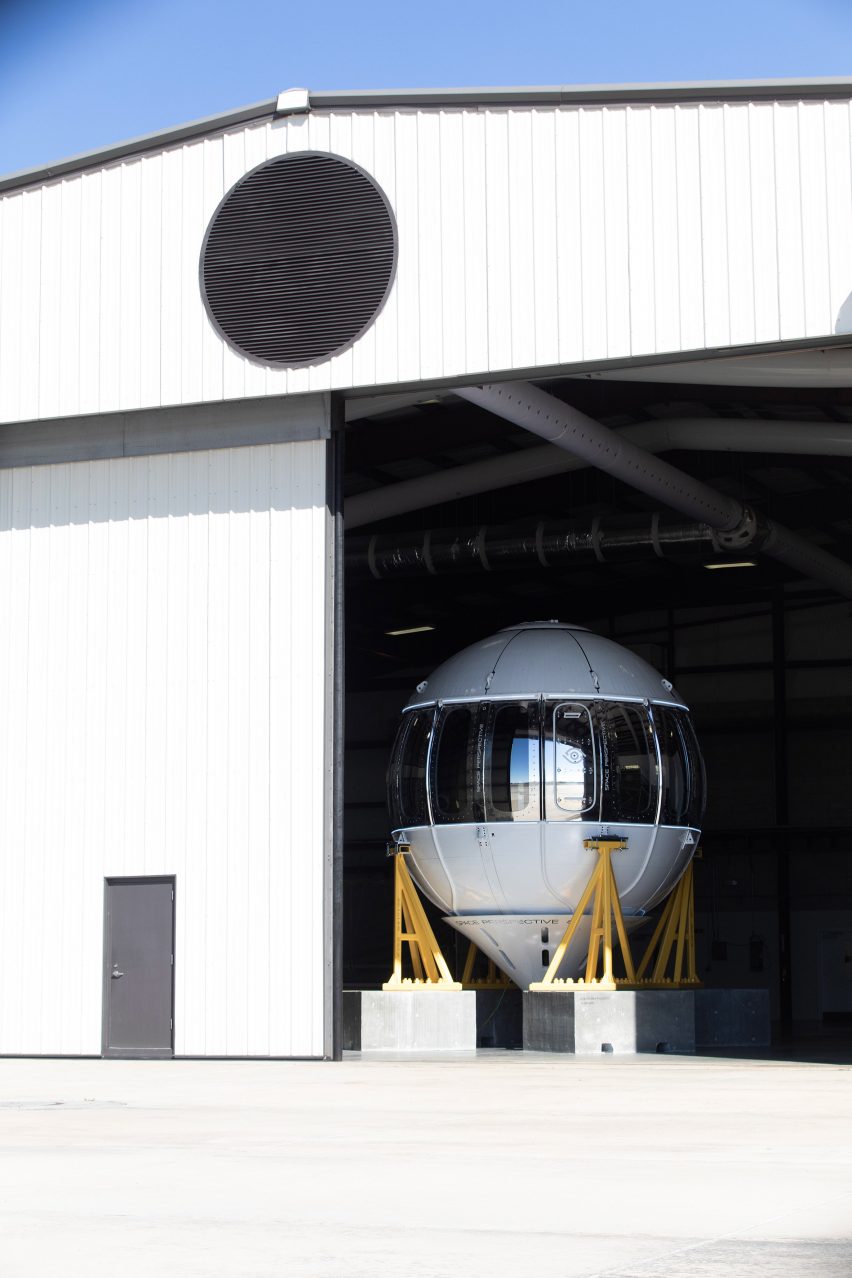
Neptune is "only the third commercial suborbital spacecraft to ever be successfully built", according to Space Perspective, following Virgin Galactic's SpaceShipTwo and Blue Origin's Crew Capsule.
The teardrop-shaped capsule was designed by London-based studio Of My Imagination to provide a markedly different experience from its forebearers.
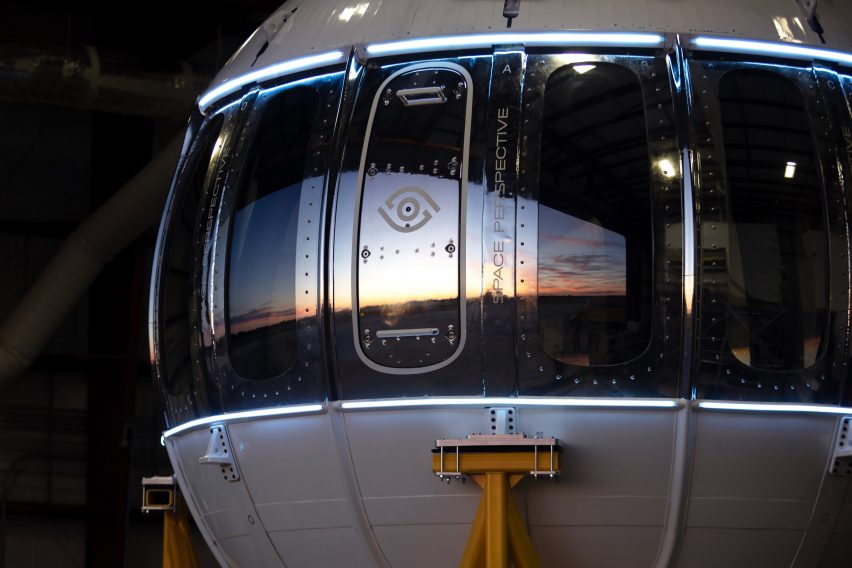
Hauled by a hydrogen-filled balloon instead of a rocket engine, the Neptune capsule will travel at only around 12 miles per hour while generating a fraction of the emissions.
Travellers' "journey to the edge of space" will last six hours – compared to Virgin Galactic's 90 minutes – allowing them to enjoy onboard amenities including a cocktail bar and Wifi access.
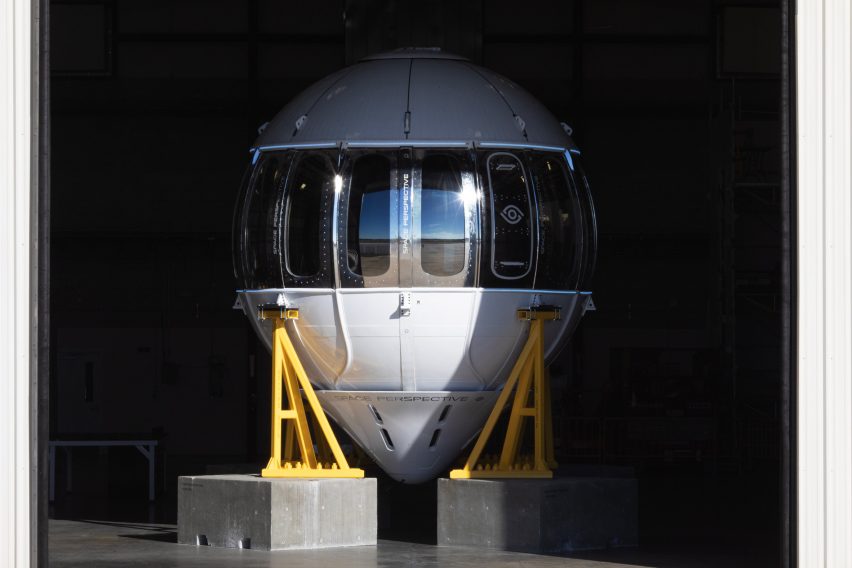
"We like to joke that every self-respecting spaceship should have a bar," co-founder Jane Poynter told Dezeen in an exclusive interview last year.
"And we talk about that because you really can't do that on a rocket-based flight. It just is emblematic of how gentle it is that you can actually have a bar where people will be able to stand at and have a drink, and cheers."
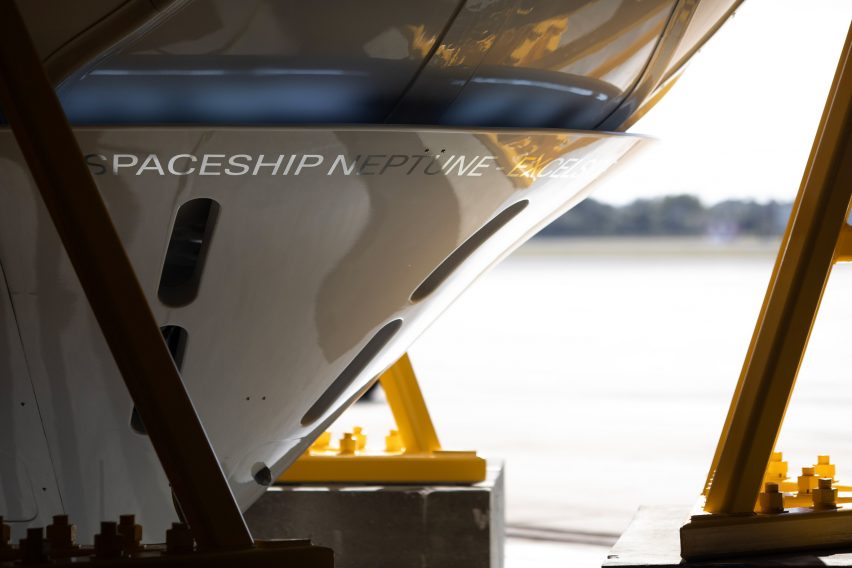
Since the spaceship won't experience zero-gravity altitudes, it will also have a fully functioning toilet, which the company is calling the Space Spa.
At 4.9 metres in diameter, with an internal volume of 60 cubic metres, the spaceship has roughly two times the volume of its rivals.
According to Space Perspective, it will be the largest human spacecraft in operation save for the space stations, accommodating a captain and eight passengers at an expected cost of $125,000 per seat compared to $450,000 on SpaceShipTwo.
Its size also makes room for the capsule to accommodate the largest windows ever flown to space, according to the company.
"The space capsule is like nothing the world has ever seen," said Space Perspective co-founder Taber MacCallum.
"We are on the cusp of a staggering shift – not only in the way we humans experience space but also what we conjure in our minds when we think of the spaceship that gets us there. We are redefining the category and paving the way for accessible space travel for years to come."
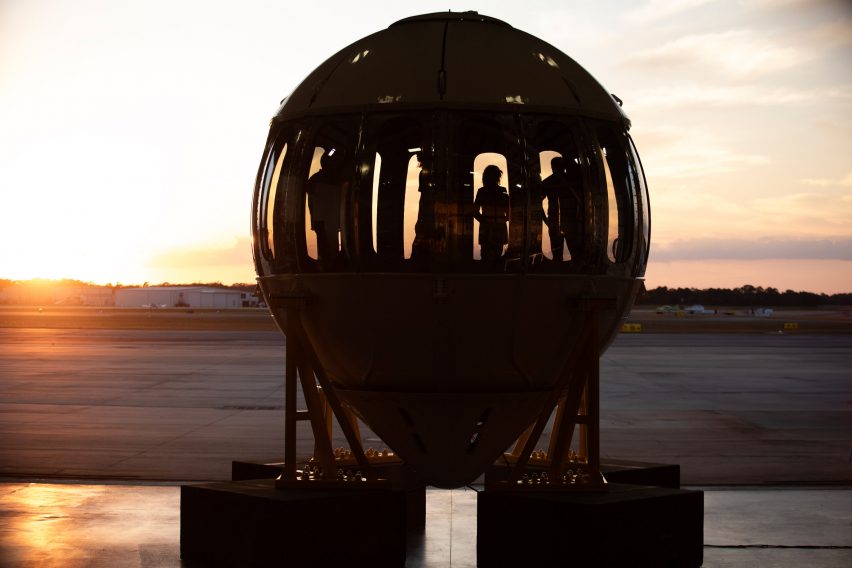
Manufactured at Space Perspective's campus in Florida, the test capsule is a fully functional has not had its interior fitted out.
The company plans to conduct its first manned test flights later this year, with plans to start sending the 1,750 people who bought advance tickets for a Neptune flight into space starting in 2025.
The Space Balloon has already been built and tested while the Marine Spaceport Voyager ship, from which the spacecraft will launch, is currently in the final stages of preparation.
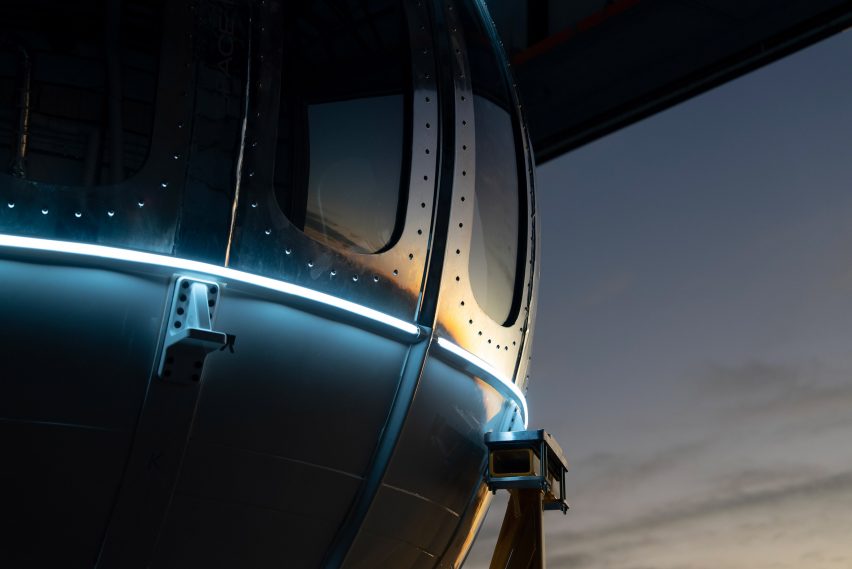
Space Perspective has yet to lock down a supplier for the hydrogen needed to propel the balloon, which will need to come from renewable sources for the company to achieve its goal of offering carbon-neutral spaceflight.
Rival company World View has designed its space balloon to work with helium gas instead – a limited and rapidly dwindling resource that is needed for more life-and-death applications such as MRI scans in hospitals.
All images courtesy of Space Perspective.